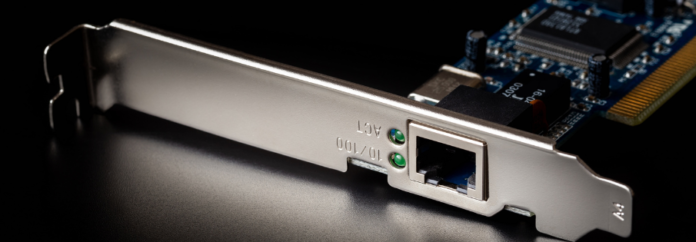Introduction
In today’s fast-paced digital world, where connectivity is key, understanding the fundamental components of computer networks is crucial. For many beginners, the realm of network technology can be a labyrinth of confusing terms and acronyms. One such integral component that often perplexes newcomers is the “Network Cards.”
This guide aims to demystify the jargon surrounding network cards, providing a comprehensive introduction for beginners. Whether you’re a casual user looking to enhance your home network or a budding IT enthusiast embarking on a journey into the realm of networking, this guide will serve as your compass.
Key Components of Network Cards
Network cards, also known as network adapters or network interfaces, are crucial components that enable computers to connect to networks. These cards facilitate the transmission and reception of data over a network.
Network Interface Controller (NIC):
The NIC is the primary hardware component that connects the computer to a network. It manages the flow of data between the computer and the network, ensuring proper communication. The NIC is often integrated into a computer’s motherboard or provided as a separate expansion card.
MAC Address:
Every network card is assigned a Media Access Control (MAC) address, which is a unique identifier assigned by the manufacturer. This address is essential for devices to recognize and communicate with each other on a network.
Data Link Layer Protocols:
Network cards operate at the data link layer of the OSI model and use protocols such as Ethernet or Wi-Fi to transmit data. Ethernet is common for wired connections, while Wi-Fi is used for wireless connections. These protocols define how data is framed, addressed, and transmitted over the network.
Interface Connector:
Network cards have physical connectors that vary depending on the type of connection. Common connectors include Ethernet ports (RJ-45) for wired connections and various connectors or antennas for wireless connections.
Bus Type:
Network cards connect to the computer’s motherboard through a specific bus type. Common interfaces include Peripheral Component Interconnect (PCI), PCI Express (PCIe), and USB. The choice of bus type affects the card’s speed and compatibility with the computer.
Form Factor:
The physical size and shape of a network card are referred to as its form factor. Common form factors include standard PCI cards, PCIe cards, and compact form factors like M.2 for laptops and other small devices.
Driver Software:
To ensure proper communication between the operating system and the network card, specific driver software is required. The manufacturer typically provides drivers which must be installed on the computer.
Transceiver and Media Dependent Interface (MDI):
In wired connections, the network card includes a transceiver responsible for converting digital signals from the computer into the appropriate electrical signals for the network medium (e.g., copper cables). The Media Dependent Interface (MDI) is the part of the network card that interfaces with the physical network medium.
Choosing the Right Network Card
Choosing the right network card is essential for ensuring optimal network performance and compatibility with your computing environment.
Connection Type:
Wired or Wireless: Determine whether you need a wired Ethernet card or a wireless network card (Wi-Fi). The choice depends on your network infrastructure and whether you need mobility.
Data Transfer Speed:
Gigabit Ethernet: If you’re dealing with large file transfers or high-bandwidth applications, consider a Gigabit Ethernet card for faster data transfer speeds.
Form Factor:
PCI, PCIe, or M.2: Choose a network card that is compatible with your computer’s expansion slots. Common form factors include PCI, PCIe (PCI Express), and M.2. Ensure the physical size and shape fit your system.
Bus Compatibility:
Check the bus type: Confirm that the network card is compatible with the bus type on your motherboard. Common interfaces include PCI, PCIe, and USB.
Wireless Standards (If applicable):
Wi-Fi Standards: If you’re choosing a wireless network card, consider the Wi-Fi standard. Common standards include 802.11ac and 802.11ax (Wi-Fi 6). Ensure compatibility with your router and other devices on the network.
Operating System Compatibility:
Driver Support: Ensure that the network card has drivers available for your operating system. Most modern network cards support popular operating systems, but it’s essential to confirm.
Brand and Reliability:
Choose reputable brands: Opt for network cards from well-known and reliable manufacturers. Read reviews and consider the reputation of the brand for quality and customer support.
Power Consumption (For Wireless Cards):
Consider power requirements: If you’re using a wireless network card in a laptop or other mobile device, consider power consumption. Some wireless cards are designed for energy efficiency, which is crucial for preserving battery life.
Security Features:
Security protocols: For wireless network cards, check for support for WPA3, the latest wireless security standard. For wired connections, ensure the card supports features like VLAN (Virtual LAN) tagging for network segmentation.
Budget:
Cost considerations: Determine your budget for the network card. While it’s essential to invest in a reliable card, there are options available at various price points.
Future-Proofing:
Consider future needs: If you anticipate upgrading your network infrastructure or increasing bandwidth requirements, choose a network card that aligns with these future needs.
Keeping Your Network Card in Top Shape
Maintaining your network card in top shape is essential for ensuring reliable and efficient network connectivity.
Keep Drivers Updated:
Regularly update the drivers for your network card. Visit the manufacturer’s website to download the latest drivers, as updated drivers often include performance improvements, bug fixes, and compatibility enhancements.
Use Quality Cables:
If you have a wired network connection, use high-quality Ethernet cables. Ensure that the cables are not damaged or bent, as faulty cables can lead to connectivity issues and reduced performance.
Optimize Network Settings:
Adjust network settings for optimal performance. This includes configuring the correct speed and duplex settings, especially for wired connections. Consult your network card’s documentation or the operating system’s settings to make necessary adjustments.
Keep Firmware Updated:
Check for firmware updates for your network card, especially if it’s a separate PCIe card. Firmware updates can address security vulnerabilities and improve overall performance.
Protect Against Power Surges:
Use surge protectors or uninterruptible power supplies (UPS) to safeguard your computer and network equipment from power surges. Electrical fluctuations can damage network cards, so preventive measures are crucial.
Proper Ventilation:
Ensure proper ventilation for your computer. Overheating can negatively impact the performance and lifespan of network cards. Adequate airflow helps prevent overheating, especially in systems with multiple expansion cards.
Secure Wireless Networks:
If you’re using a wireless network card, secure your Wi-Fi network with a strong password and encryption (WPA3 is recommended). This prevents unauthorized access and protects your network card from potential security threats.
Monitor Network Traffic:
Use network monitoring tools to keep an eye on network traffic and identify any unusual patterns or issues. This can help you proactively address problems before they impact the performance of your network card.
Regularly Check for Updates:
This ensures that your system remains secure and can contribute to the overall stability of your network card.
Avoid Physical Damage:
Handle your computer and network card with care. Avoid physically stressing or damaging the network card during installation or maintenance. Take precautions against static electricity, and follow proper procedures when handling hardware components.
Perform Periodic Maintenance:
Periodically inspect and clean your computer’s internals, including the network card and other components. Dust buildup can contribute to overheating, affecting performance.
Conclusion
In conclusion, understanding and maintaining your network card is essential for a seamless and reliable computing experience in our interconnected world. The network card, whether wired or wireless, serves as the bridge between your device and the vast network of information and communication. By following best practices and implementing proactive measures, you can keep your network card in top shape.
Educate Yourself:
Familiarize yourself with the key components of network cards, including the NIC, MAC address, data link layer protocols, interface connectors, and more.
Choose Wisely:
When selecting a network card, consider factors such as connection type, data transfer speed, form factor, bus compatibility, and operating system support. Opt for reputable brands and keep future needs in mind to make a well-informed choice.
Maintain Regular Updates:
Keep drivers, firmware, and operating systems updated to ensure compatibility, security, and performance improvements. Regularly check for manufacturer updates and apply them promptly.
Optimize Settings:
Adjust network settings, both at the hardware and software levels, for optimal performance. Ensure proper ventilation and protection against power surges to prevent overheating and electrical damage.
Secure Your Network:
Implement security measures, especially for wireless networks. Use strong passwords, and encryption, and stay informed about the latest security protocols to protect against unauthorized access and potential threats.
Monitor and Troubleshoot:
Utilize network monitoring tools to keep an eye on traffic patterns and troubleshoot issues promptly. Being proactive in identifying and addressing problems can prevent disruptions in network connectivity.
Handle with Care:
Treat your network card and computer components with care to avoid physical damage. Follow proper handling procedures, guard against static electricity, and periodically clean your system to prevent dust buildup.

